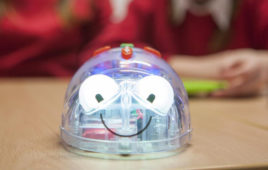A recent development at University of Virginia (UVA) is creating new opportunities that bolster the confidence of both patients and residents in the otolaryngology department.
Dr. Jose Gurrola Gurrola, a nose specialist, along with Dr. Robert Reed, an otolaryngology resident, and Dwight Dart, a design lab engineer at the UVA School of Engineering and Applied Science’s Rapid Prototyping 3-D Printing Lab, have created 3-D-printed skulls to use as models for rhinological surgical simulation using a combination of software and hardware.
To create the models, a patient’s CT or MRI scans are converted to 3-D printable files, which are then printed on a 3-D printer.
“The models allow students, residents and doctors to see, feel and understand dimensions of real human geometry,” Dart said.
According to Gurrola, the benefits of the 3-D models are plentiful; they are relatively cheap to produce, reusable and readily accessible to trainees.
The model skulls “are available to students or doctors in affiliated programs, such as neurosurgery, whenever they want it,” Gurrola said. “This allows our UVA trainees to gain significant endoscopy experience early on and throughout their career.”

Dr. Jose Gurrola II, a rhinologist at UVA Health System, performs an endoscopy on a 3-D printed skull model. (Credit: Sanjay Suchak)
During Gurrola’s own time as a trainee, he and his fellow residents would practice performing endoscopies using the “buddy system.”
“Students and residents in the same class would take turns ‘scoping each other,” Gurrola said. “You wanted to make sure you didn’t hurt the other person too much, because they were going to ‘scope you right after.”
After moving into his role as a surgeon and teacher, Gurrola let his students practice the procedure on him.
“It wasn’t always comfortable,” he said. “And I didn’t like the idea of my patients having to experience that, but I knew that we still needed a way to train the residents.”
Gurrola used his knowledge of 3-D printing technology and his personal experiences to brainstorm a new method that would unify the medical center’s goals of advancing the training and education of residents and maintaining patient safety and satisfaction.
“We’re using next-generation technology today to meet the realization of our goals in terms of improving our learning opportunities for our trainees while ensuring that our patients continue to get world-class care,” Gurrola said.
Moving forward, Gurrola and Dart foresee potential advancements – like implanting sensors and fluid flow lines that would allow the models to react similarly to human geometry – that could lend themselves to even more opportunities for doctors and trainees across medical departments.
“For those patient cases that may be unique or different, the 3-D models should be able to provide us with the option of examining that particular anatomy,” Gurrola said.


